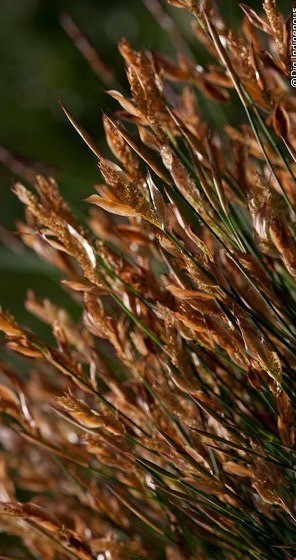Cape thatching reed
(Elegia tectorum)

Description
Elegia tectorum, previously Chondropetalum tectorum or Restio tectorum, more commonly Cape thatching reed, or dakriet (in Afrikaans), is a member of the restio family, Restionaceae. It is a tufted perennial growing to between 1.5 and 2.25 m, with deciduous leaf sheaths. Flowers are less than 3 mm long. Petals are smooth or hairy in the upper half. E. tectorum is found in marshes and seeps on deep sand in the Western Cape and Eastern Cape of South Africa. The species was originally noted by Carl Linnaeus the Younger. In 1838, E. tectorum was noted by Irish botanist William Henry Harvey (as R. Tectorum) for its use as a thatching material, and in the making of brooms and baskets. Historically, only the taller forms of the species, growing in the surroundings of Malmesbury, was used for thatching; the more popular thatching reed was Thamnochortus insignis. Carl Peter Thunberg also noted the use in thatching in 1793, as did English botanist John Lindley in 1846.Thurnberg notes the Dutch East India Company had a farm at Zeekoe Valley (17 km SSE of the Castle of Good Hope), where the reed was cultivated.
Taxonomic tree:







